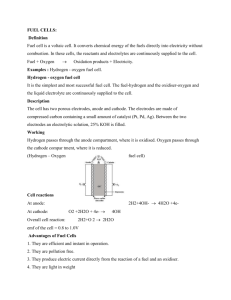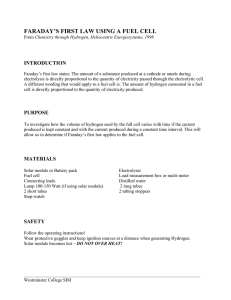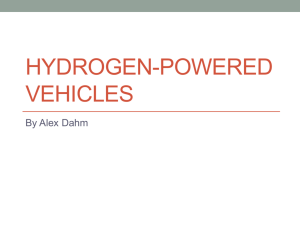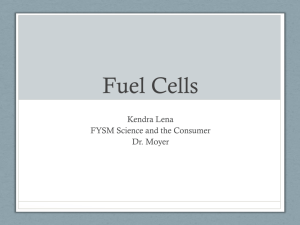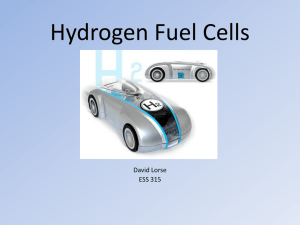Debate Rubric - The College of Natural Sciences
advertisement
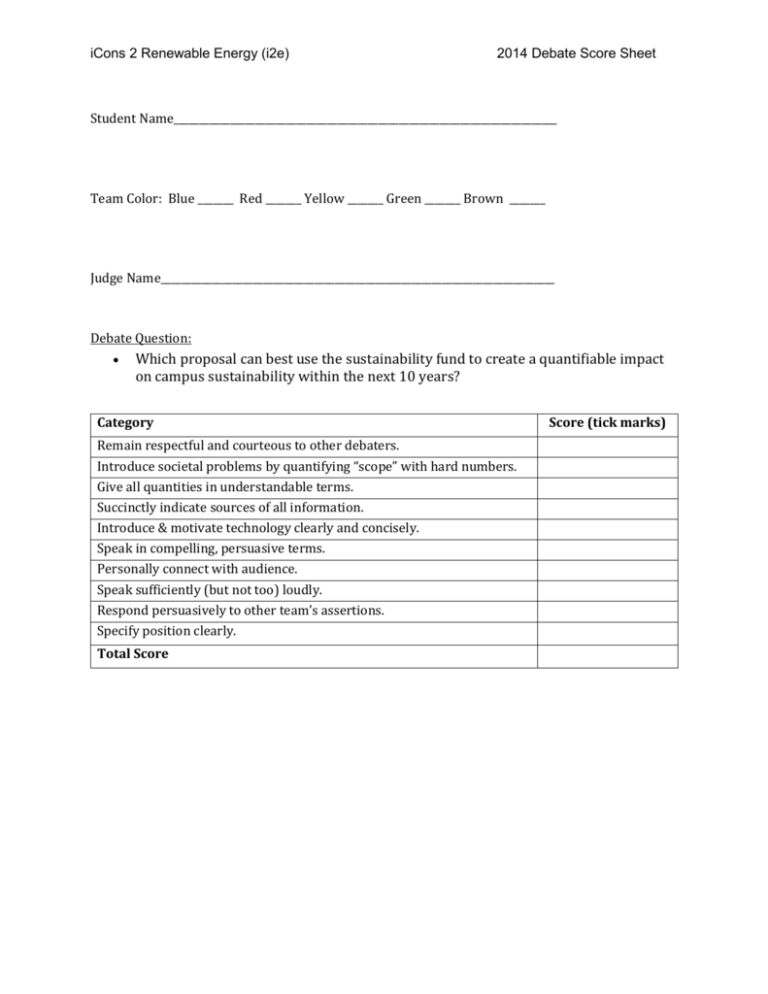
iCons 2 Renewable Energy (i2e) 2014 Debate Score Sheet Student Name___________________________________________________________________________ Team Color: Blue _______ Red _______ Yellow _______ Green _______ Brown _______ Judge Name_____________________________________________________________________________ Debate Question: Which proposal can best use the sustainability fund to create a quantifiable impact on campus sustainability within the next 10 years? Category Remain respectful and courteous to other debaters. Introduce societal problems by quantifying “scope” with hard numbers. Give all quantities in understandable terms. Succinctly indicate sources of all information. Introduce & motivate technology clearly and concisely. Speak in compelling, persuasive terms. Personally connect with audience. Speak sufficiently (but not too) loudly. Respond persuasively to other team’s assertions. Specify position clearly. Total Score Score (tick marks) iCons 2 Renewable Energy (i2e) 2014 Debate Score Sheet UMass Amherst / Integrated Concentration in Science iCons 2 Renewable Energy Debate Scoring Rubric 1. Remain respectful and courteous to other debaters. “I thank my fellow iCons student for their opinion but I must disagree …” 2. Introduce societal problems by quantifying their “scope” with hard numbers. 3. Give all quantities in understandable terms (e.g., percent or other good units). 4. Succinctly indicate sources of all information. “…More than 80% of USA’s energy still comes from fossil sources – coal, oil, and natural gas – according to the Livermore energy flow diagram, bringing atmospheric CO2 concentrations to ~400 ppm, and increasing by ~2 ppm/year, according to co2now.org …” 5. Introduce and motivate technology clearly, concisely, and with hard numbers. ”…The hydrogen fuel cell is an exciting technology that offers the potential for reducing CO2 emissions by converting fuels to electricity much more efficiently than traditional, combustion-based methods – around 30% efficient according to our Campus Heating Plant. Fuel cells function by separately and catalytically converting hydrogen gas and oxygen gas into their atomic components, then recombining them through the use of an electrolyte membrane, with efficiencies ranging in 40-60%, and theoretically as high as 83%, according to the Dept of Energy Fuel Cell Program…” 6. Speak in compelling, persuasive terms (e.g., use some intonation for emphasis) 7. Personally connect with audience (e.g., eye contact, smiling, personal anecdotes) 8. Speak sufficiently (but not too) loudly. 9. Respond persuasively to other team’s assertions: (other team): “Sure, fuel cells sound good, but who in the audience owns one? Wow, not one hand! Why? Because the technology is too expensive and fuel cells break down too quickly – that’s why Secretary of Energy and Nobel laureate Steve Chu scrapped the hydrogen fuel cell car program when Obama took office. In contrast, my group’s solution is robust for the following reasons…” (your response): “Yes it’s true that Steve Chu won a Nobel prize, but here are the reasons why he made the wrong choice about hydrogen fuel cells in 2009. New catalysts and membrane materials are being developed at several labs including right here at UMass Amherst; these will bring down the cost. And while fuel cell cars may be a ways away, fuel cells for powering our every-day portable needs are being used right now, according to the Hydrogen Association of America...” 10. Specify position clearly (e.g., own team's strengths, other teams' weaknesses).






